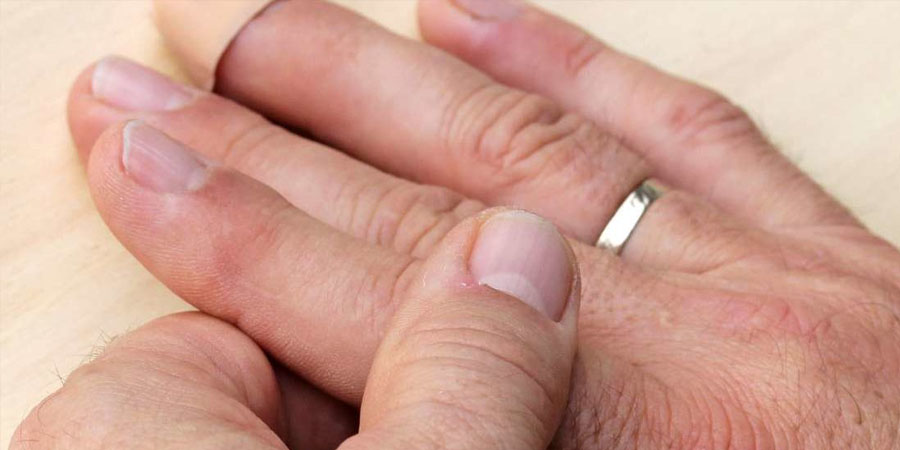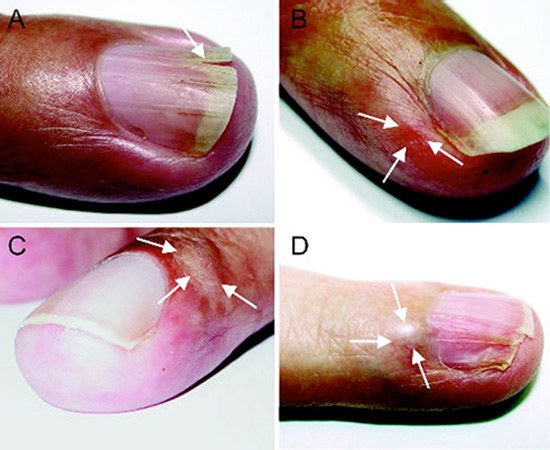Introduction
The importance of healthy hand function may go largely unnoticed. This is until something happens that negatively affects how we use our hands. Symptoms like hand pain can have a large impact on our quality of life. We rely on our hands for innumerable tasks at work. Our hands are incredibly important for communication and healthy hand function helps to increase our enjoyment of our sports and hobbies.

Did you know there is a rare benign condition that causes hand pain and is difficult to diagnose? There is a plethora of situations that can cause hand pain. Repetitive strain injuries, arthritic conditions, cysts, and other syndromes are just a few. In addition, a difficult-to-diagnose tumour, known as a glomus tumour, may be the culprit of hand pain.
Could a glomus tumour be affecting your hand function or causing hand pain in someone you know?
Since we use our hands for a multitude of tasks, it may be worth investigating the possibility of this rare benign tumour. Hand pain that hinders our ability and enjoyment of using our hands for work and play can have a large impact on our quality of life and our ability to perform normal activities of daily living.

What is a glomus and why does it make tumours?
Glomus tumours of the hand are found in the glomus body. The glomus body is made up of specialised tissue in our skin that helps with temperature regulation. They help our blood vessels hold on to warm blood in cold temperatures which can help keep us warm. They also help dissipate heat in warm temperatures. For this reason, there are more concentrations of these specialised glomus tissues in the hands and feet.
So Small and Yet So Painful
Diagnosing a glomus tumour is rather difficult. Research shows it takes, on average, seven years from onset of symptoms to diagnosis. This is because hand symptoms of glomus tumour are similar to many other conditions that can affect the hands. Also, glomus tumours are tiny, normally less than 7 mm in size. To make diagnosis even more challenging, glomus tumours are made up of mostly normal cells. This means that the tumours are often unidentifiable on general hand assessment techniques. This even includes many kinds of scans.

It makes sense that early diagnosis may lead to earlier treatment. This could save the effected hand corresponding pain and discomfort. It may also lessen any long-term damage done to corresponding bone and tissue.
Why is This Happening to My Finger?
The causes of glomus tumours are yet mostly unknown. There is ongoing research of some potential genetic components which may contribute to susceptibility. Trauma may also be a potential culprit. Of the rare cases, glomus tumours are much more prevalent in women than in men, sometimes up to four times more woman than men in some studies. The average age at diagnosis is between 33 and 44 years of age with people as young as 11 and as old as 95 with proven glomus tumours. It is equally common in right and left hands and feet. The third and fourth digits are the most common fingers to be affected by glomus tumours.
Symptoms
The three most documented symptoms are severe paroxysmal pain, point tenderness, and temperature sensitivity. The symptoms of glomus tumour are widely general of many hand problems, conditions, and issues. Making arrival to diagnosis even more difficult is that each symptom may not always occur in each patient.
Do You Think You May Have Glomus Tumour of the Hand?
There is a plethora of problems that can occur in the hands. Temperature sensitivity, particularly to cold is a striking symptom which may help differentiate a glomus tumour diagnosis. Many glomus tumour sufferers have had the condition for such a long time, they may forget to mention ongoing, continuous issues. They may have temperature sensitivity so irritable; they notice it even when opening the refrigerator or when picking up a cold drink. Some people may where multiple pairs of gloves or mittens to attempt to keep their hands warm.

Potentially, a lead to a glomus tumour diagnosis is a situation where other diagnoses have not cured the issues with your hands. It is recommended to be persistent. Some patients feel a grainy substance where the tumour is. This may help lead your doctor to further examination techniques such as MRI, which are useful in diagnosing glomus tumours.

Another helpful diagnosing strategy is to use what is called a Love test with a Hildreth test. A Love test is where pressure is applied with a pin to the suspected area. If a glomus tumour is present, there will be intense pain. In performing a Hildreth test, a tourniquet below the suspected area is placed. Then, applying pressure with a pin like the Love test, if pain is reduced, this is further evidence of a glomus tumour. These strategies have been helpful in diagnosing these small occult tumours.

Upon Diagnosis, What Will Happen?
The good news: After diagnosis, treatment is often curative.
Surgical excision is the treatment of choice for glomus tumour removal. Most patients have a full recovery after having their tumours surgically removed. Fortunately, patients are able to return to their previous jobs, sports, and hobbies. And happily, surgery often results in complete resolution of pain and sensitivity symptoms.

Many incidences of glomus tumour are under the nailbed and may have caused deformity of the nail. Meticulous repair of the nailbed may help to reduce post-surgical malformation or deformity of the nailbed.
Full excision of the lesion is the operative goal and leads to low incidences of recurrence of glomus tumour. Depending on the location of the tumour and other factors, surgeons may choose different surgical techniques and surgical approaches.
Studies show that surgical excision most often leads to regaining full function of the affected hand. Additionally, early diagnosis can lessen any damage done to corresponding bone and tissue.

Summary
Our hands are incredibly important in almost all our activities of daily living. Most of us would not be able to complete tasks at work without full function of our hands. Using our hands may increase our quality of life exponentially at play, during sports, or when practicing our favourite hobby or other enjoyable activities. Suffering from pain or sensitivity in our hands can cause disability and hardship that has negative consequences throughout our lives.
Multiple trips to doctors and specialist with persistent symptoms may be a clue that there is a difficult-to-diagnose glomus tumour to blame. These tiny tumours are found at the tips of fingers and toes or under the nails. They can be excruciatingly painful, sensitive to cold and hot temperatures, and suffer point tenderness.
It is still under investigation as to what causes these tumours. Luckily, there are more and more diagnostic techniques to help discover if one of these small, benign tumours is the culprit of the symptoms. It is also incredibly fortunate that, once diagnosed, treatment is often curative with surgical removal of the tumour. Importantly, we now know that early diagnosis can lead to full recovery.